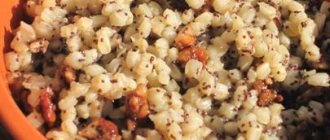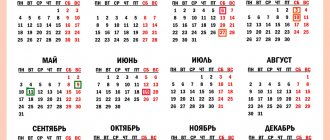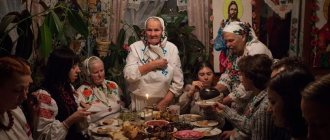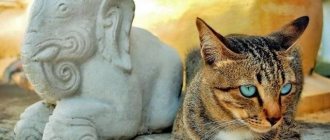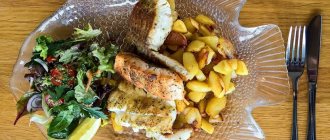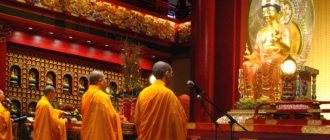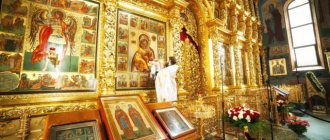Very soon, on March 15, Lent will begin for Orthodox Christians - the strictest and longest in the church calendar. This is not a diet or a way to lose weight for the summer, as some believe, but the body will indeed go through a powerful transformation along with consciousness and spirit. Therefore, you need to prepare for fasting in advance so as not to harm yourself and your health.
Think over your diet in advance
Fasting does not mean spending seven long weeks sadly crunching lettuce and crackers. Yes, this is a time of serious and strict restrictions, but a modern city dweller with an intense and busy lifestyle needs to properly balance his diet. Make a sample menu, try to make it varied and interesting - this will make it easier to hold out until May 1, the bright holiday of Easter.
The diet must include porridge:
- oatmeal,
- buckwheat,
- rice,
- pearl barley,
- millet
This is a valuable source of fiber, which is necessary for normal intestinal function and immunity. Cereals contain many vitamins and minerals, so porridge should be on the table every day. To make it tastier, you can add jam or vegetable sauces, seasonings and spices.
You should definitely eat fruits and vegetables during Lent: you can boil and bake them, eat them fresh, or make salads from them. If you adhere to traditional fasting rules that prohibit vegetable oil on certain days, make a salad dressing from avocado, ground herbs and soy sauce (this simple recipe will also work for others).
Your diet should definitely include soy products (this is a good alternative to meat), mushrooms and legumes: in addition to fiber, they contain a large amount of protein, which the body simply needs.
Great Lent 2021: detailed daily nutrition calendar for the laity
| Fasting weeks | 1st week of Lent (March 15 - 21) | 2nd week of Lent (March 22 - 28) |
| Monday | Complete abstinence from food | Dry eating: cold, uncooked plant foods without oil and unheated drinks are allowed. Once a day - in the evening. |
| Tuesday and Thursday | Dry eating: cold, uncooked plant foods without oil and unheated drinks are allowed. Once a day - in the evening | Hot vegetable food cooked without oil is allowed once a day. |
| Wednesday and Friday | Dry eating: cold, uncooked plant foods without oil and unheated drinks are allowed. Once a day - in the evening | Dry eating: cold, uncooked plant foods without oil and unheated drinks are allowed. Once a day - in the evening. |
| Saturday and Sunday | Hot vegetable food with vegetable oil is allowed twice a day. Wine is allowed. | Hot vegetable food with vegetable oil is allowed twice a day. Wine allowed |
| Fasting weeks | 3rd week of Lent (March 29 - April 4) | 4th week of Lent (April 5 - 11) |
| Monday Wednesday Friday | Dry eating: cold, uncooked plant foods without oil and unheated drinks are allowed. Once a day - in the evening | Dry eating: cold, uncooked plant foods without oil and unheated drinks are allowed. Once a day - in the evening |
| Tuesday and Thursday | Hot vegetable food cooked without oil is allowed once a day. | Hot vegetable food cooked without oil is allowed once a day. |
| Saturday and Sunday | Hot vegetable food with vegetable oil is allowed twice a day. Wine allowed | Hot vegetable food with vegetable oil is allowed twice a day. Wine allowed |
| Fasting weeks | 5th week of Lent (April 12 - 18) | 6th week of Lent (April 19 - 25) |
| Monday Wednesday Friday | Dry eating: cold, uncooked plant foods without oil and unheated drinks are allowed. Once a day - in the evening | Dry eating: cold, uncooked plant foods without oil and unheated drinks are allowed. Once a day - in the evening |
| Tuesday and Thursday | Hot vegetable food cooked without oil is allowed once a day. | Hot vegetable food cooked without oil is allowed once a day. |
| Saturday | Hot vegetable food with vegetable oil is allowed twice a day. Wine is allowed. | Hot vegetable food with vegetable oil is allowed twice a day. Fish roe is allowed. |
| Sunday | Hot vegetable food with vegetable oil is allowed twice a day. Wine is allowed. | Fish dishes allowed |
| Fasting weeks | 7th week of Lent (April 26 - May 1) |
| Monday Tuesday Wednesday | Dry eating: cold, uncooked plant foods without oil and unheated drinks are allowed. Once a day - in the evening |
| Thursday | Hot vegetable food with vegetable oil is allowed twice a day. Wine is allowed. |
| Friday | Complete abstinence from food |
| Saturday | Hot vegetable food cooked without oil is allowed once a day. |
With such a restriction, all the rules of observance of Lent will be observed, and even without going into too much detail, you will be able to follow the path of abstinence and humility of your flesh on special religious days.
Replenish the lack of vitamins and microelements
Before the start of Lent, it is wise to visit a therapist and find out if there are any restrictions in your case (medical indications are an important reason to soften the fast or abandon it altogether). The two main issues that fasters face are a drop in iron levels in the body and a lack of vitamin B12.
There are two ways to solve the problem ( after preliminary consultation with a doctor!
). The first one will not interfere even with people with perfect health and excellent blood tests. It is necessary to diversify the diet by adding such products as:
- cocoa powder (no added sugar),
- grenades,
- seaweed and algae (spirulina and chlorella),
- spinach,
- sauerkraut,
- buckwheat,
- seafood (if fish is allowed for only two days during fasting, shrimp and mussels can be eaten freely).
The second is to choose a suitable vitamin complex for yourself or take iron supplements separately.
Holy Sunday, Easter
May 2, 2021 Easter, Bright Sunday of Christ. In Orthodoxy, this day is considered the brightest and most joyful holiday. Christians celebrate the resurrection of the Son of God by gathering around a set table. Before the celebration begins, it is advisable to attend a service in the temple; if this is not possible, be sure to pray at home.
It is believed that on this day saints pay special attention to requests and prayers addressed to them. Lent is over, believers can return to their normal diet. They begin to break their fast in the morning. First of all, you need to try the colored eggs and Easter cake, which are blessed in the temple the day before. On Easter, believers must do a good deed - help the weak, give alms to the needy.
Help must come from the heart and be selfless. On this day you need to avoid sadness, tears and conflicts. Guests are invited to the house, with whom they celebrate the holiday. Of the alcoholic drinks for Easter, Cahors is most suitable.
- Easter Easter cake: recipes with photos step by step in the oven
- Easter cottage cheese: 8 delicious and simple recipes
Eat nuts, peanut butter and sesame butter
Nuts are a valuable source of protein, fiber, vitamins and microelements. You can add them to porridge or salads, make pastes for sandwiches and salad dressings, or simply eat a handful of nuts with honey every day - it’s tasty and very healthy. Sesame is a champion in calcium content in plant form; it is needed to maintain healthy nails and bones. In light of the restriction of dairy products during Lent, this is a very relevant product.
Monastic Lenten menu for every day
Despite the limited list of food products, the monastic Lenten menu contains vitamins, minerals, and trace elements necessary for the body.
Monastic menu for the week, what you can eat during Lent:
Monday.
- Breakfast - oatmeal, poured with boiling water, with the addition of chopped nuts, dates, raisins, figs.
- Lunch - potatoes baked in the oven, sauerkraut, lean bread.
- Dinner - vinaigrette.
Tuesday
- Breakfast - semolina porridge on water.
- Lunch - vegetable pumpkin cream soup, rye bread.
- Dinner - stewed vegetables.
Wednesday
- Breakfast - applesauce with chopped walnuts, lean bread.
- Lunch: pea puree with breadcrumbs.
- Dinner - fruit salad of persimmons, bananas, oranges, dates.
Thursday
- Breakfast - pumpkin porridge with raisins.
- Lunch - lean cabbage soup with beans and fresh cabbage, rye bread.
- Dinner - Rice with tomato dressing.
Friday
- Breakfast - grated beets with prunes.
- Lunch - jacket potatoes, diet bread.
- Dinner - dried fruit compote, jacket potatoes.
Saturday
- Breakfast - pancakes with banana, prepared without adding milk or eggs.
- Lunch - vermicelli soup with mushroom broth.
- Dinner - stew in gravy of fried onions, tomatoes, bell peppers.
Sunday
- Breakfast - buckwheat with mushroom sauce.
- Lunch - borscht with beans, croutons.
- Dinner - low-fat rice pudding with dried fruits.
In addition, the Monastic menu includes special days when nothing can be eaten - Clean Monday, Saturday of Holy Week and Good Friday. On Maundy Thursday you can drink some wine. Many believers spend the period from the second to the fifth day of fasting on bread and water.
Similar articles
What to do if you fall off your diet: eliminating the consequences of a mini-disaster
2019-09-23
Sea buckthorn tea: benefits for soul and body + best recipes
2019-09-02
Petrov post
Petrov fast is dedicated to the acts of the apostles - Peter and Paul, in 2020 it runs from June 15 to July 11 inclusive. During it, it is recommended to refrain from eating meat and dairy products, eggs, and mayonnaise. On Tuesdays, Thursdays, Saturdays and Sundays, fish and caviar are added to the list of foods allowed during fasting.
Dormition post
The Assumption Fast is the only one among all dedicated to the Most Holy Theotokos. Every year it takes place at the same time - from August 14 to 27. Foods you can eat during fasting: brown bread, vegetables, fruits, legumes, nuts, honey, dried fruits, cereals, grains. It is prohibited to consume meat and fish products, dairy products, and eggs.
Christmas post
40 days before the great holiday - the Nativity of Christ - the Nativity Fast begins. In 2021 it will be held from November 28 to January 6 inclusive.
What to eat during fasting until December 6 - St. Nicholas Day: vegetables, fruits, any kind of porridge, legumes, black bread, nuts, seeds. After St. Nicholas Day until January 2, on weekends fish and vegetable oil are added to the Lenten menu. From January 2 to the 6th, the menu again becomes strictly vegetarian, in honor of the approaching Nativity of Christ.
Leave the post smoothly
On Easter Day, it is customary to prepare a rich feast, but after a long period of abstinence from food, you should not immediately pounce on fatty foods, alcohol, eggs and pastries - the body will receive a real shock. The following days can be very unpleasant in this case: with digestive disorders, stomach pain, drowsiness and exacerbation of chronic diseases, if any. Enter your usual diet and routine gradually and smoothly, adding your favorite foods one by one.
In conclusion, we have prepared for you an example of a three-day menu. Feel free to change your dishes and be healthy!
Find out more about the rules of nutrition and behavior during fasting, as well as options for ready-made meals for breakfast, lunch and dinner in the continuation of the article>>
WHAT NOT TO EAT
According to the church charter, during Lent it is forbidden to eat food of animal origin: dairy products, fish, meat, eggs. What foods are prohibited during fasting:
- animal fats;
- meat and meat products: smoked meats, ham, sausages;
- eggs and products with which they are prepared;
- dishes with intense taste: spices, very sweet or salty foods;
- dairy products: kefir, milk, fermented baked milk, yogurt, butter, cheeses, sour cream;
- fast food, chocolate, baked goods;
- alcohol. On non-strict fasting days, you can drink one glass of red wine;
- sunflower oil (can be added to dishes only on non-strict fasting days).
When considering the prohibitions and restrictions on what you can eat by day during Lent in 2021, you need to remember that only church ministers should strictly adhere to it. Ordinary lay people can fast with indulgences, taking into account life circumstances, the state of their health and physical labor. For example, refusing to consume sunflower oil is usually not practiced, as is dry eating.
By limiting themselves to sweets, heavy foods, alcoholic drinks and delicacies, distracting themselves from the daily hustle and bustle and amusements, believers can focus on repentance, prayer and the fight against their many sins and sinful thoughts.
What products can be used in preparing Lenten dishes?
List of foods you can eat during Lent:
- Vegetables raw, stewed, pickled, and in some cases fried: potatoes, cabbage, carrots, beets, radishes, pumpkin, sweet peppers, onions, garlic.
- Pasta cooked without eggs or butter.
- Celery root, parsley, earthen pear, rutabaga. They can be eaten not only raw, but also stewed and sautéed in mushroom sauce.
- Greens: basil, cilantro, dill, parsley leaves, sorrel, onion, lettuce.
- Sea kale.
- Any types of legumes: beans, nagut, peas, lentils, soybeans.
- Lavash, lean pancakes, unleavened flatbread.
- Stewed, pickled, boiled or fried mushrooms.
- Cereals prepared without milk or butter. Among them, it is worth highlighting the especially useful ones - rice, oats, pearl barley, corn grits, millet, buckwheat.
- Drinks: dried fruit compote, tea, coffee, soy milk, freshly squeezed juice.
- Any types of nuts and seeds.
- Black, rye, whole grain bread.
Despite the absence of a ban, it is better to exclude freshly squeezed juice, pickled and pickled vegetables from what you can have for breakfast during Lent. During a period of limited nutrition, the stomach is half empty, especially in the morning. Therefore, such products can provoke gastritis, an upset gastrointestinal tract.
Who is not recommended to fast?
The rules of fasting described above are not allowed for everyone. A sudden drop in protein can weaken the immune system and cause illness in some people.
This category includes: people in poor health, pregnant and nursing mothers, young children, children, the elderly and people doing strenuous physical work.
These categories of people can think about a less strict fast, talk with a spiritual mentor and receive a blessing to relax the rules.
Are sweets allowed?
Orthodox confessors disagree about the use of sweets on fasting days. Some say that it is undesirable to eat any kind of sweets during Lent, since during this period you need to give up material pleasures and indulge in asceticism.
Others argue that strict restrictions are prescribed for the monastery ministers, but not for the laity. The latter are allowed to consume the following types of Lenten sweets:
- Marshmallows, marmalade, marshmallows - prepared on agar-agar, without the use of gelatin.
- Dried fruits.
- Sunflower, sesame, peanut halva.
- Diet cookies that do not contain margarine, butter, or eggs.
- Caramel.
- Bitter chocolate.
- Sushi, bagels, lean croutons, gingerbread.
- Candied fruits.
- Turkish Delight.
- Kozinaki.
- Honey.
When purchasing store-bought sweets, you should pay close attention to the absence of animal ingredients, including egg whites, lard, and gelatin.
Similar articles
The whole truth about the Russian sauna - we debunk the myths and take a steam bath for health benefits
2019-09-02
Is there any benefit to hibiscus tea and how to brew it correctly
2019-08-22



